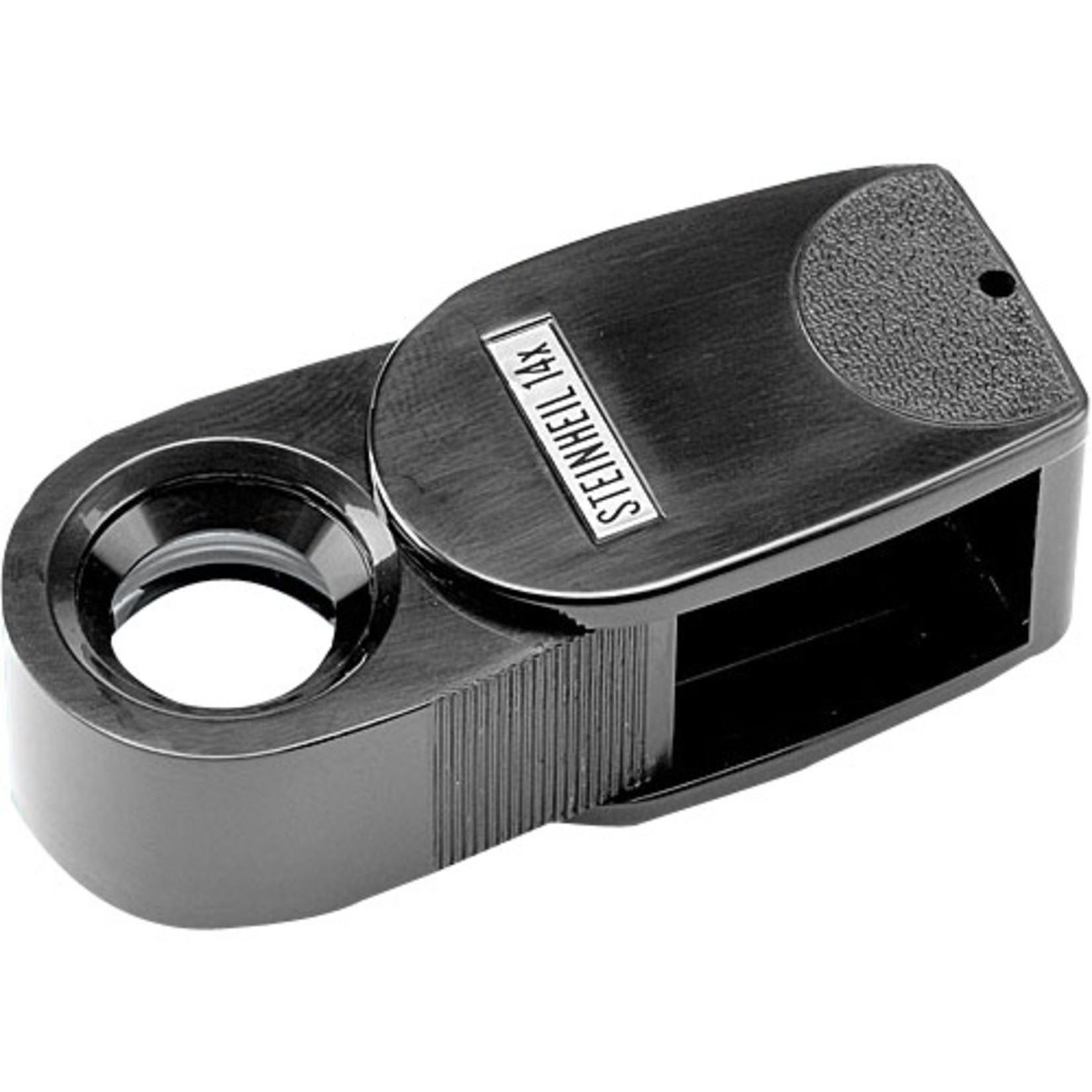Steinheil magnifiers consist of a bi-convex crown glass lens with high curvature and two negative, flint glass meniscus lenses cemented to both sides in the middle of the positive section. These magnifiers with various magnification factors have been in protracted and extensive use for preliminary examination of microscopic specimens. They are mounted on stands designed specifically for this purpose, which can be replaced as required. Our PEAK Steinheil magnifiers are available with magnification factors of 7x, 10x, 14x and 20x. The cemented lenses are mounted in a light weight, black plastic tube with a cover of the same material to protect the surface of the lens from dust and scratching. In use the cover serves as a handle for the magnifier. These lenses are coated to prevent reflection.
PEAK Steinheil magnifier 1985-7
Magnification factor: 7 x
Focusable: with working distance
Effective opening: 16 mm
Optical characteristics: Achromatic
Dimensions: 39 x 24 x 22 mm
Weight: 22 grams
Case. included
PEAK Steinheil magnifier 1985-10
Magnification factor: 10 x
Focusable: with working distance
Effective opening: 15.5 mm
Optical characteristics: Achromatic
Dimensions: 39 x 24 x 22 mm
Weight: 19 grams
Case: included
PEAK Steinheil magnifier 1985-14
Magnification factor: 14 x
Focusable: with working distance
Effective opening: 12 mm
Optical characteristics: Achromatic
Dimensions: 39 x 24 x 22 mm
Weight: 18 grams
Case: included
PEAK Steinheil magnifier 1985-20
Magnification factor: 20 x
Focusable: with working distance
Effective opening: 7 mm
Optical characteristics: Achromatic
Dimensions: 39 x 24 x 22 mm
Weight: 18 grams
Case: included
In optics, an achromat is a system consisting of two lenses made of glasses with different Abbe numbers (different degrees of dispersion). The system contains a converging lens (usually made of crown glass) and a diverging lens with a smaller Abbe number and thus stronger dispersion than the converging lens (usually made of flint glass). This allows the longitudinal colour error that every simple lens has to be corrected for two wavelengths, i.e. the system has the same cut-off for these two colours.





